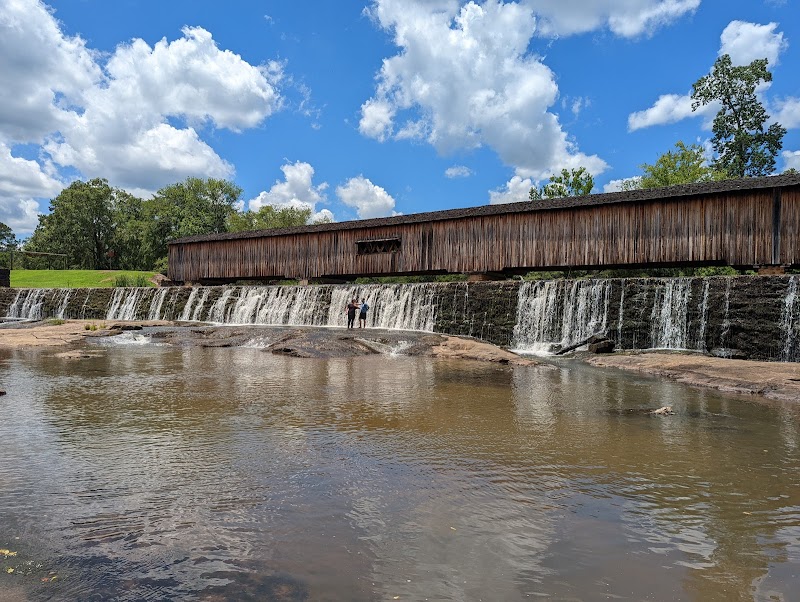
Experience the thrill of spring migration at the State Botanical Garden in Athens, Georgia, where hundreds of bird species traverse forest trails and wetlands. This guide offers practical tips and insights to help both casual bird lovers and dedicated birders make the most of their visit.
Start Early for Peak Bird Activity
Birds are most active during early morning hours, so plan your hike for sunrise to mid-morning to catch the best sightings.
Wear Waterproof, Sturdy Footwear
Trails can be damp or muddy, especially near creek crossings and wetlands, so protect your feet with durable, waterproof shoes.
Bring a Field Guide and Binoculars
An 8x or higher magnification binocular and a regional bird field guide will enhance your identification skills during brisk glimpses of passing species.
Respect Quiet Zones
Minimize noise and sudden movements to avoid disturbing birds during breeding and migration periods, fostering better chances of close encounters.
Spring Bird Watching at the State Botanical Garden: A Practical Guide to Athens' Feathered Visitors
Spring ushers in an electrifying pulse across the State Botanical Garden of Georgia in Athens. Migratory birds, pushed forward by unseen winds and instinct, arrive in waves that ripple through the garden’s diverse habitats. Forest trails stretch through oak and pine groves that sway with gentle urgency, while ponds shimmer under early morning light, daring the keen observer to catch a flash of vibrant plumage.
The garden offers roughly 10 miles of trails, mostly level with mild elevation gains, winding through mixed hardwood forest, open meadows, and wetland edges—each terrain hosting species with different calls and colors. Expect to encounter warblers darting like flickering strokes of paint, woodpeckers drumming with practiced insistence, and maybe the sharp flash of a red-shouldered hawk circling high above.
For the pragmatic birder, plan your visit from dawn to mid-morning when birds are most active. Comfortable waterproof footwear is crucial; some trails skirt where creeks surge forward, challenging your footing and requiring steady balance. Pack binoculars with at least 8x magnification, a field guide specific to southeastern birds, and a water bottle sufficient for 2 hours of hiking. The garden’s signage helps navigate the winding paths, but a downloaded trail map or app aids in strategic stops at spots known for migratory concentrations.
To maximize your experience, pause quietly and let the garden’s life pulse around you. Feel the breeze negotiate with budding leaves; listen as underbrush rustles under cautious feet not your own. Birds are fierce travelers, driven by survival yet elegantly alive in every note and feather. Respect their space, move with care, and you meet a force both untamed and accessible.
Aside from bird watching, the garden includes educational exhibits that explain migratory patterns and local ecology, helping you understand not just what you see but why it matters. Spring migrations here are an annual engagement with nature’s rhythms—dynamic, challenging, and richly rewarding. Whether you’re a casual visitor or a seasoned birder, Athens’ State Botanical Garden offers a grounded adventure filled with sound, motion, and discovery.
Nearby Trips
All Adventures
Boat Charters
Water Activities
Adventures near Athens, Georgia
Discover the unique and memorable adventures that make Athens, Georgia special.
Frequently Asked Questions
When is the best time to see the most birds at the State Botanical Garden?
Early spring, from March through May, is the peak time for migratory birds passing through. Dawn through mid-morning offers the highest bird activity.
Are binoculars necessary for bird watching here?
While not mandatory, binoculars greatly enhance your ability to spot and identify birds from a distance without disturbing them.
Are the trails suitable for beginners or families?
Yes, the trails are generally flat and well-maintained, making them accessible to most hikers, including families and casual walkers.
Is there an entrance fee to the State Botanical Garden?
No, the garden is free to enter and explore, supported by donations and volunteer efforts.
What other wildlife might I encounter besides birds?
Look for turtles basking near ponds, butterflies flitting among wildflowers, and the occasional deer or small mammals in the woodlands.
Are there restroom facilities available on-site?
Yes, there are clean restrooms located near the Visitor Center and parking areas.
Recommended Gear
Binoculars
For close-up views of birds without disturbing their habitat, high-quality binoculars are a must-have.
Waterproof Hiking Shoes
Spring rains and creek crossings make durable, waterproof shoes important to keep you comfortable and safe.
Refillable Water Bottle
Hydration is key during hikes, especially when active birding lengthens your time outdoors.
Insect Repellent
Spring migration coincides with increased insect activity; repellent ensures you focus on birds, not bites.
Local Insights
Hidden Gems
- "The quiet overlook near the Fern Glade offers close views of warblers during migration without heavy foot traffic."
- "A small pond along the Contemplative Garden trail attracts waterfowl often overlooked by casual visitors."
Wildlife
- "Keep watch for the prothonotary warbler, a striking yellow bird that favors the garden’s wetland edges."
- "Eastern towhees and brown thrashers provide distinctive calls from underbrush, often hinting at wildlife hidden just out of sight."
History
"The State Botanical Garden was founded in 1968 with the mission to educate and conserve, transforming former farmland and pine plantations into a thriving research and recreational refuge."
